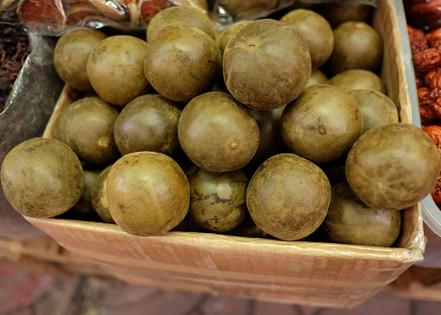Environmental Nutrition: Exploring monk fruit sweetener and herbal antibiotics
Q: Is monk fruit sweetener safe?
A: Native to China, monk fruit, also known as luo han guo, is a round, green fruit, which has been gaining popularity as a natural sweetener. Monk fruit sweetener is created by removing the skin and seeds of the fruit, crushing the fruit to collect the juice, and drying the juice to make a powdered extract. The sweetener is 150 to 200 times sweeter than sugar, contributing zero calories and a minimal impact on blood glucose and insulin. The sweetness comes from the mogrosides found in the fruit, which have been found to contain antioxidant properties. Although many find the taste pleasant, an aftertaste has been noted by some individuals.
Monk fruit can be used as a substitute for sugar in beverages, sauces and dressings, and, because it is heat stable, the sweetener can be included in baked goods. Monk fruit sweetener is considered "Generally Recognized as Safe" by the FDA for various populations, including children, pregnant women, and people with diabetes. Consumers should be aware that some monk fruit sweeteners may contain added sugar alcohols, sugars, or molasses. Read labels to identify potential additives.
--Kaley Todd, M.S., R.D.N.
Q: Are herbal antibiotics useful?
A: Antibiotic drugs treat infections in humans and animals caused by bacteria. Many antibiotics were originally derived from naturally occurring plants and other species. Common foods like honey, garlic, onions, ginger, herbs (e.g., sage and oregano), and herbal teas (like rosehips) have been shown to have antimicrobial activity in the laboratory. There is renewed interest in these naturally occurring antibiotic substances, because many bacteria have become resistant to present day pharmaceutical antibiotic drugs.
Although there is evidence that plant remedies can be effective in treating many bacterial infections in both humans and animals, the evidence is scanty and often based on poorly controlled studies, studies with very few participants, or studies done in a petri dish. We tend to think that if something is natural it is safe, but that is not always the case with herbal remedies. The composition of many commercial herbal preparations are not standardized, nor are they subjected to the same rigorous testing as pharmaceutical drugs, hence their safety or interaction with other drugs cannot be assured.
--Sharon Salomon, M.S., R.D.
(Environmental Nutrition is the award-winning independent newsletter written by nutrition experts dedicated to providing readers up-to-date, accurate information about health and nutrition in clear, concise English. For more information, visit www.environmentalnutrition.com.)







